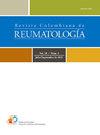射频超声多光谱法在骨质疏松症诊断中的应用
Q3 Health Professions
引用次数: 0
摘要
骨质疏松症是一种骨骼疾病,其特征是骨密度(BMD)下降和骨微结构破坏,导致骨折风险增加。传统上,骨密度是用x射线密度测定法(DXA)测量的。然而,射频超声多谱法(REMS)已成为一种很有前途的骨质疏松症评估技术。各种研究已经评估了REMS的可行性和准确性,显示了不同解剖部位和人群中DXA的显著相关性,包括绝经后妇女、肾移植患者和类风湿关节炎患者等。REMS还展示了检测骨假物的能力,并在其存在时提供可靠的测量。虽然DXA仍然是诊断骨质疏松症的金标准,但REMS已被证明是评估骨密度和骨折风险的有效且有前途的工具。它能够排除人为因素,并在不同人群中提供精确的测量,这突出了它作为骨质疏松症评估的补充或替代方法的潜力。本文章由计算机程序翻译,如有差异,请以英文原文为准。
Utilidad de la multiespectrometría ecográfica por radiofrecuencia en el diagnóstico de la osteoporosis
Osteoporosis is a skeletal disorder characterized by decreased bone mineral density (BMD) and a disruption of bone microarchitecture, leading to an increased fracture risk. Traditionally, BMD has been measured using X-ray densitometry (DXA). However, Radiofrequency Echographic Multi Spectometry (REMS) has emerged as a promising technique for the assessment of osteoporosis. Various studies have evaluated the feasibility and precision of REMS, showing significant correlations with DXA in different anatomical sites and populations, including post-menopausal women, renal transplant patients, and those with rheumatoid arthritis, among others. REMS has also demonstrated the ability to detect bone artifacts and provide reliable measurements in their presence. While DXA remains the gold standard for diagnosing osteoporosis, REMS has proven to be an effective and promising tool in assessing BMD and fracture risk. Its capability to rule out artifacts and offer precise measurements in diverse populations highlights its potential as a complement or alternative in the evaluation of osteoporosis.
求助全文
通过发布文献求助,成功后即可免费获取论文全文。
去求助
来源期刊

Revista Colombiana de Reumatologia
Medicine-Rheumatology
CiteScore
0.80
自引率
0.00%
发文量
92
期刊介绍:
The Colombian Journal of Rheumatology (Revista Colombiana de Reumatología) is the official organ of the Colombian Association of Rheumatology (Asociación Colombiana de Reumatología) and the Central American, Caribbean and Andean Association of Rheumatology (Asociación Centroamericana Caribe Andina de Reumatología) - ACCA. It was created in December 1993 with the purpose of disseminating scientific information derived from primary and secondary research and presenting cases coming from the practice of Rheumatology in Latin America. Since its foundation, the Journal has been characterized by its plurality with subjects of all rheumatic and osteomuscular pathologies, in the form of original articles, historical articles, economic evaluations, and articles of reflection and education in Medicine. It covers an extensive area of topics ranging from the broad spectrum of the clinical aspects of rheumatology and related areas in autoimmunity (both in pediatric and adult pathologies), to aspects of basic sciences. It is an academic tool for the different members of the academic and scientific community at their different levels of training, from undergraduate to post-doctoral degrees, managing to integrate all actors inter and trans disciplinarily. It is intended for rheumatologists, general internists, specialists in related areas, and general practitioners in the country and abroad. It has become an important space in the work of all rheumatologists from Central and South America.
 求助内容:
求助内容: 应助结果提醒方式:
应助结果提醒方式:


